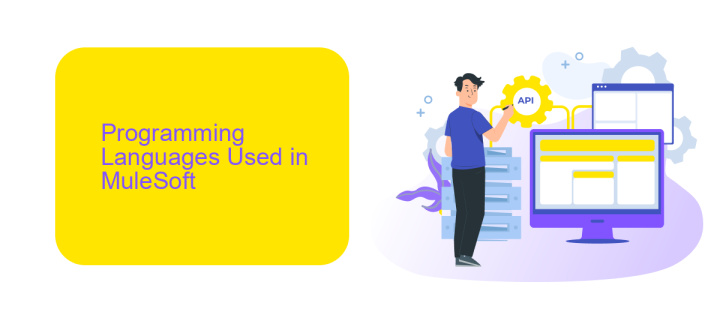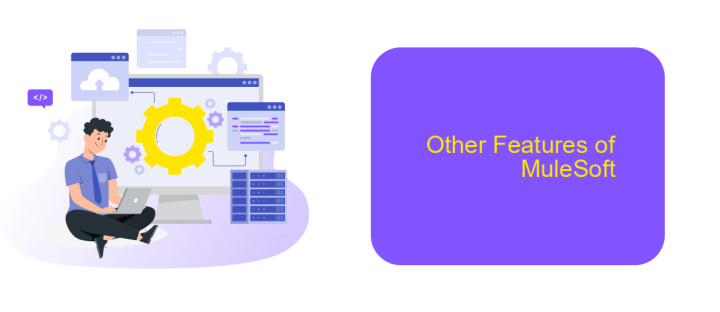What Language is MuleSoft Written in
MuleSoft, a robust integration platform, is designed to connect various applications, data, and devices with ease. Understanding the programming languages behind MuleSoft is crucial for developers and IT professionals aiming to harness its full potential. This article delves into the primary languages used in MuleSoft's development, providing insights into its architecture and how it facilitates seamless integration.
MuleSoft Architecture
MuleSoft's architecture is designed to facilitate seamless integration across various systems, applications, and services. It employs a highly modular and scalable approach, allowing for efficient data exchange and process automation. The core component is the Mule runtime engine, which acts as the backbone for processing and routing data between different endpoints.
- API-led connectivity: Organizes integration into three layers - System, Process, and Experience.
- Anypoint Platform: Provides unified tools for designing, building, and managing APIs and integrations.
- DataWeave: A powerful data transformation language used for converting data between different formats.
- CloudHub: A fully managed, multi-tenant integration platform as a service (iPaaS).
- API Manager: Allows for the creation, deployment, and management of APIs with security policies.
In addition to these core components, MuleSoft can be complemented by services like ApiX-Drive, which simplifies the setup of integrations and automates data flow between various applications. This enhances the overall efficiency and capability of the MuleSoft ecosystem, making it a robust solution for modern enterprise integration needs.
Programming Languages Used in MuleSoft

MuleSoft primarily utilizes Java as its core programming language. Java's robust ecosystem, platform independence, and extensive libraries make it an ideal choice for building scalable and high-performance integration solutions. MuleSoft's Anypoint Platform leverages Java to provide a reliable and efficient environment for developing, deploying, and managing APIs and integrations. Additionally, MuleSoft uses XML and DataWeave for data transformation and mapping, allowing developers to manipulate and convert data between different formats seamlessly.
In addition to Java, MuleSoft also supports various scripting languages such as JavaScript and Groovy for custom scripting and automation tasks. These languages provide flexibility and ease of use for developers to extend the platform's capabilities and implement complex business logic. Furthermore, tools like ApiX-Drive can be integrated with MuleSoft to streamline and automate integration processes, enhancing the overall efficiency and effectiveness of the integration solutions. By combining these programming languages and tools, MuleSoft offers a comprehensive and versatile platform for modern enterprise integration needs.
Benefits of Using MuleSoft

MuleSoft is a powerful integration platform that offers numerous benefits for businesses looking to streamline their operations and improve connectivity between various applications and systems. By leveraging MuleSoft, organizations can achieve seamless integration, enhance productivity, and reduce operational costs. Its ability to connect disparate systems and automate workflows makes it an invaluable tool for modern enterprises.
- Comprehensive Integration Capabilities: MuleSoft provides robust tools for integrating a wide range of applications, data sources, and APIs, ensuring smooth data flow and communication across the enterprise.
- Scalability and Flexibility: The platform is designed to scale with your business needs, allowing you to handle increasing data volumes and complex integration requirements effortlessly.
- Enhanced Productivity: With MuleSoft's intuitive interface and pre-built connectors, developers can quickly create and deploy integrations, significantly reducing development time and effort.
- Cost Efficiency: By automating workflows and reducing manual processes, MuleSoft helps organizations lower operational costs and improve overall efficiency.
- Seamless Integration with ApiX-Drive: MuleSoft's compatibility with services like ApiX-Drive enables businesses to easily configure integrations, further simplifying the process of connecting various systems and automating tasks.
In summary, MuleSoft offers a comprehensive suite of tools and features that empower businesses to achieve seamless integration, enhance productivity, and reduce costs. Its ability to scale and adapt to evolving business needs, combined with its compatibility with services like ApiX-Drive, makes it a valuable asset for any organization looking to optimize their integration processes.
Other Features of MuleSoft

MuleSoft is renowned for its versatility and robust integration capabilities. One of its standout features is the ability to connect disparate systems seamlessly, ensuring smooth data flow across various platforms. This is crucial for businesses looking to streamline operations and enhance productivity.
Another significant feature of MuleSoft is its user-friendly interface, which allows even those with minimal technical expertise to create and manage integrations. This democratization of integration technology empowers more team members to contribute to the digital transformation efforts.
- Comprehensive API management
- Pre-built connectors for various applications
- Real-time analytics and monitoring
- Scalability to handle growing data volumes
Furthermore, MuleSoft offers extensive support for cloud and on-premises deployments, giving businesses the flexibility to choose the best environment for their needs. With tools like ApiX-Drive, users can automate integrations effortlessly, reducing the time and effort required to synchronize data between different applications. This combination of features makes MuleSoft a powerful solution for modern enterprises.
## Conclusion
In conclusion, MuleSoft's primary programming language is Java, which underpins its robust integration capabilities. Leveraging the strengths of Java, MuleSoft provides a scalable and flexible platform for connecting various systems, applications, and data sources. This foundation allows developers to build seamless integrations and manage APIs with efficiency and reliability.
For those looking to enhance their integration processes, services like ApiX-Drive offer additional support. ApiX-Drive simplifies the setup of integrations by providing user-friendly tools and automation features. This ensures that even complex integration tasks can be handled with ease, complementing the capabilities of MuleSoft. Together, these technologies empower businesses to streamline their operations and achieve greater connectivity across their digital ecosystems.
FAQ
What language is MuleSoft written in?
Can I use MuleSoft with other programming languages?
Is MuleSoft suitable for non-developers?
How do I automate integrations with MuleSoft?
Is MuleSoft open source?
Time is the most valuable resource for business today. Almost half of it is wasted on routine tasks. Your employees are constantly forced to perform monotonous tasks that are difficult to classify as important and specialized. You can leave everything as it is by hiring additional employees, or you can automate most of the business processes using the ApiX-Drive online connector to get rid of unnecessary time and money expenses once and for all. The choice is yours!

